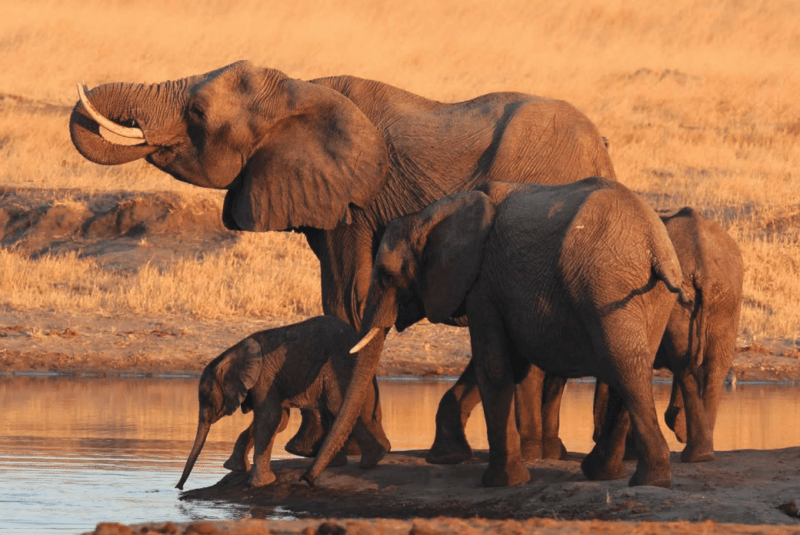
By Jim Knox
We stood mouths agape. Much like the other elementary schoolers rooted to the spot, my younger brother, Bruce, and I looked up in awe at the creature towering above us. Every bit as awe-inducing as the massive articulated dinosaur skeletons nearby, this creature commanded our rapt attention. Head high, ears flared, the giant in our midst charged out of our imaginations and into our presence. While I am indebted to my parents for countless experiences over the course of my childhood, that moment in the rotunda of The Smithsonian National Museum of Natural History is especially memorable and is conjured in an instant with the same sense of wonder.
This past week, that same sense of wonder revisited me as my footsteps echoed along the granite halls of the American Museum of Natural History. It was there I experienced The Secret World of The Elephant, an immersive exhibition of these magnificent creatures. Exploring their world through visual, tactile, and auditory kiosks, I became reacquainted with these giants who—quite literally—shape our world.
The African Bush Elephant, Loxodonta africana, also known as the African Savanna Elephant, is the largest of the planet’s three elephant species and the largest living terrestrial creature. While its close cousins the African Forest Elephants can reach up to 10 feet at the shoulder (the height of a basketball hoop) and 12,000 pounds in weight (the weight of 4 Volkswagen Beetles), and the Asian Elephant can reach up to 11 feet in height and 12,000 pounds in weight, the African Bush Elephant can reach 12 feet in height and 20,000 pounds in weight. The world record for the species is another matter. That behemoth—the very same creature my brother and I saw mounted in the Smithsonian Museum of Natural History—reached an astounding 13 feet at the shoulder and weighed an estimated 24,000 pounds (roughly the weight of a school bus)!
Inheriting a pedigree of excellence, these three surviving species are the present-day representatives of an extended tribe of over 200 closely related species which have shaken the ground for over 20 million years. They have ranged from “small” Wrangell Island Woolly Mammoths of 2.5 tons to the colossal Asian Straight-tusked Elephant which reached 17 feet at the shoulders and a staggering 22 tons in weight!
Creatures of superlatives, everything about Bush Elephants is on a different scale altogether. While they are truly enormous beasts, they have an equally enormous, and beneficial, impact on their habitats. Requiring up to 500 pounds of plant matter per day to fuel their massive bodies, these strict herbivores consume fruit, vegetables, grasses, leaves, bark, and roots for most of their waking hours. With far more than one belly to fill, these herd animals roam through the savanna and forest margins, eating everything they encounter. This mass consumption leads to the active transport—and fertilization—of the seeds of hundreds of plant species. What is more significant is the distance over which elephants spread tons of fertilized seeds. While they average 20 miles of territory per day, the ground-eating strides of these great beasts enable them to roam a remarkable 125 miles of territory in a single day! Juggernaut Johnny Appleseeds, Bush Elephants do more than plant vast areas—they terraform. In their quest to devour fruit, leaves, and bark, these huge beasts put their trunks, tusks, and bulldozing frames to use, felling trees in their ravenous path, maintaining forest margins and grasslands alike, ensuring the health of these ecosystems.
Pathfinders, they lead the way to discovery, benefiting those around them. Utilizing their uncanny, and not completely understood olfactory ability, Bush Elephants also detect water up to 12 miles away as well as water hidden several feet below ground! By accessing and excavating these water sources, elephants expand the surface area available to other creatures and may increase both surface flow and depth—enabling life-giving water to flow in times of plenty and times of drought alike.
A biological wonder, the elephant has so much to teach us. At a glance, these gargantuan creatures have nothing in common with us tiny humans. A closer look however reveals profound similarities. Elephants and humans alike are vertebrates and mammals. We are both family creatures, we live within structured societies, we share resources, and we achieve more together than we do apart. Behaviorally, both species have a capacity for rage and violence. Yet we are also capable of compassion and cooperation, even altruism. We mourn our dead, protect our young, and stand as one in times of danger. I have witnessed a herd of Bush Elephants advance on a pair of lions, pushing them out of their territory adjacent to South Africa’s Sabi River. I have seen them cooperate and rally around their calves, ensuring the wellbeing of the next generation.
In the elephant we have a creature of a magnitude which is hard to fathom. These great beasts not only command our respect, they have earned such reverence, they have been worshiped as deities for millennia. They demonstrate that great power and a gentle manner can reside within one creature…that it is possible to plant the very same ground that we may tremble.
Jim Knox serves as the Curator of Education for Connecticut’s Beardsley Zoo where he directs education and conservation efforts. A Member of The Explorers Club, Jim enjoys sharing his passion for wildlife with audiences in Connecticut and beyond.





